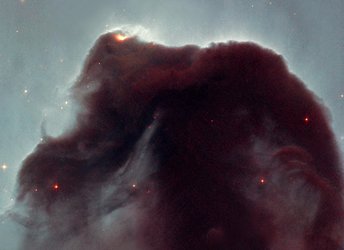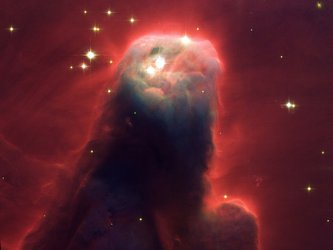Star-forming region N11B, in the Large Magellanic Cloud
This star-forming region, catalogued as N11B, lies in the Large Magellanic Cloud (LMC), located only 160,000 light-years from Earth.
NASA/ESA's Hubble Space Telescope captured this image of star birth in the neighbouring galaxy. With its high resolution, the Hubble Space Telescope is able to view details of star formation in the LMC as easily as ground-based telescopes are able to observe stellar formation within our own Milky Way galaxy.
This image shows N11B, which is a small subsection within an area of star formation cataloged as N11. N11 is the second largest star-forming region in the LMC. Within the LMC, N11 is surpassed in size and activity only by the immense Tarantula nebula (also known as 30 Doradus.)
The image illustrates a perfect example of star formation in a nearby galaxy where new star birth is being triggered by previous-generation massive stars. A collection of blue and white stars near the left of the image are among the most massive stars known anywhere in the Universe.
Yet another new generation of stars is now being born in N11B, inside the dark dust clouds in the centre and right of the image. More dark clouds of interstellar dust with intriguing shapes are seen silhouetted against the glowing interstellar gas at the top right. Several of these dark clouds are bright-rimmed because they are illuminated by neighbouring hot stars.
This image was taken in 1999 with Hubble's Wide Field Planetary Camera 2 using filters that isolate light emitted by hydrogen and oxygen gas.






